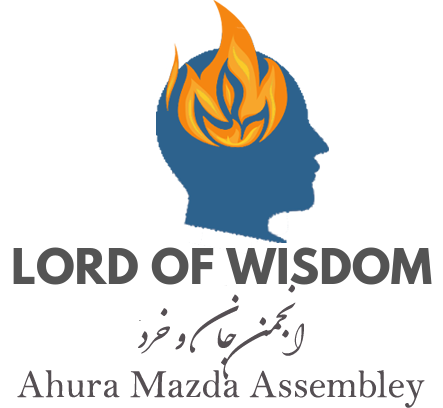The Shah-Nameh was written in the latter half of the tenth century A.C. by Hakim Abol-Qassem Firdowsi of Toos (in the Khurasan province of Iran).
The poem became popular with the Iranian public in a short time and earned a pre-eminent status as a vehicle for reclaiming Iranian Identity in the traumatic era following the downfall of the last Sassanian ruler. Three centuries after the defeat of Yazdgard III, Firdowsi’s composition saved the Persian language from the threat of extinction, thereby preserving the essential medium for protecting Persian culture.
The Arab conquest, in the mid-seventh century, had two grave consequences. One was that Zarthustrianism, the religion of the majority of Iranians, was attacked and repressed by Arab missionaries through coercion and force. This fact led to a gradual dwindling in the number of Zarthushtis, first in the greater Iranian Empire, then in Iran proper. The second disaster was that Iran was no longer ruled by indigenous Iranians. This, of course, meant that Iranian national culture and identity were discouraged by the new rulers. Immediately after the Arab conquest, the country came under the rulership of the Umayyad caliphs of Damascus and became part of the Islamic Caliphate.
Almost a century later, through a series of revolts, the Umayyad dynasty was replaced by the Abbasids, another Arab ruling family. The Abbasid seat of power was in Baghdad since the Abbasid court owed its ascension to power in part to support from such civil servant families as the famous Barmakis. The result of a rulership which was not based in Iran, was the reemergence of Persian influence at the ruling level. During the latter part of the Abbasid era, within which Firdowsi lived; his home province of Khurassan enjoyed nominal autonomy from Baghdad. Under the rule of the Samani family, client kings of the Abbasids, a Persian renaissance began and the Persian language, replacing Arabic, once again became the language of court poetry. The Samani rulers took great pride in their ancient Iranian past and the continuity and unique character of their Persian heritage.
As a result of this blossoming of the Persian language, such beautiful literary works as the Shah-Nameh began to emerge. Ferdows belonged to the ‘dehghan’ class, or the landed gentry, who, at the time, were viewed as the living repository of pure Iranian tradition. Several times throughout the Shah-Nameh, Ferdowsi writes how he conscientiously recorded the stories of Iran’s past. The poem deals with the history of Iran from the time of creation up to the moment of the Islamic conquest. Hence, the, Iranian national epic has been viewed by some scholars [Dick Davis, Epic and Sedition, Fayetteville, 1992, p. xxii] as being a piece of ‘literary archaeology’ and a ‘mytho-poeticization’ of the Iranian past, rooted in ‘antiquarianism’, which may partly explain the continuity of Iranian cultural Identity through several calamities which Iran has endured up to the present.
For over one thousand years, the Shah-nameh has been regarded by Iranians as a primary link with their ancient past and has served as a document of national pride. For many Iranians today, it conjures up a sense of nostalgia and a longing for their glorious past. In many homes, the esteemed status of the Shah-Nameh is demonstrated each year during the celebration of Nov-Ruz when a copy of this masterpiece is placed alongside a ‘holy book on the ‘HaftSeen’ table – be it the Avesta in a Zarthusti home or the Quran in a Moslem household. Among some Moslem families, the Shah-Nameh may even be the only book on the Haft-Seen.
Throughout the ages the beautiful verses of the Shah-Nameh have been memorized and passed down from one generation to the next. After the advent of the printing press, almost every culturally conscious Iranian had a copy of the epic at home. There is hardly a living soul in Iran who is not familiar with a story or two from the Shah-Nameh. Even those who cannot read or write may be able to recite a few couplets with faithful accuracy, a testament to the strength of the Iranian oral tradition which is also responsible for preserving portions of the Avesta to this day.

Add a Comment